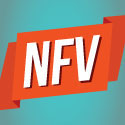Verizon Demands Better NFV 'Answers' From Vendors
US telco throws down the gauntlet to the SDN and NFV industry, demanding progress in key areas.

NICE, France -- TM Forum Live! 2016 -- A senior Verizon executive has accused telecom vendors of failing to come up with the "answers" that operators really need as they introduce software and virtualization technologies into their networks.
Gagan Puranik, Verizon Communications Inc. (NYSE: VZ)'s director of SDN and NFV architecture planning, says most of the virtualization work so far has addressed "low-hanging fruit," such as customer premises equipment and firewalls, and that much of the promises made about the technology have yet to materialize.
"When we talk about decoupling the control and data planes and introducing that kind of philosophy throughout the network, the software from vendors just doesn't meet the scope needed to do this," he told attendees at today's TM Forum Live! event in Nice, France. "That means those planes don't scale independently and we need that."
The executive's remarks came just two weeks after Verizon flagged the completion of an NFV deployment based on OpenStack , an open-source technology, at five of its US data centers. Vendors involved in that project included Big Switch Networks , Dell Technologies (Nasdaq: DELL) and Red Hat Inc. (NYSE: RHT). (See Showdown at the OpenStack Corral.)
One of Puranik's biggest gripes appears to be the lack of progress on the development of microservices, whereby network functions are decomposed into small individual components that operators can reuse and recompose to create customized, scalable applications.
"No one has really developed this on the vendor side," he complained. "They give us big VNFs [virtual network functions] … but we need to develop micro releases so that we can drop incremental upgrades into the network."
Heavy Reading 's Caroline Chappell has previously noted the attractions of microservices, describing the phenomenon as "real cloudification" that would deliver more "extreme business benefits" for telcos. (See The Real NFV Revolution Is 5 Years Away.)
But she has also pointed out that vendors currently have little incentive to develop microservices products given the investments they have made in monolithic network functions.
For more NFV-related coverage and insights, check out our dedicated NFV content channel here on Light Reading.
For Puranik, "micro releases" represent one of the four big promises of SDN and NFV technology, the others being "flexible change management," "automation and analytics" and "shared resources." And while he is relatively happy with the status of the latter, he is asking for greater industry support in other areas.
When it comes to flexible change management, Verizon wants to be able to carry out software upgrades at any time of the day and not be restricted to particular timeslots.
The issue here, however, is to do with people and processes rather than technology, according to Puranik. "The hardest thing is transforming people," he said. "This is a call to action to the TM Forum to help us get there faster and not just to focus on technology but on process and people transformation as well."
The Verizon executive also laments the lack of industry focus so far on automation and analytics, arguing that operators will struggle to develop predictive algorithms -- identifying problems in the making -- without better analytics. "The industry has not focused much on analytics and as a Tier 1 service provider we need that," said Puranik. "Please help us to build artificial brains to create algorithms."
Puranik blames the malaise on a proliferation of standards bodies and open source groups that do not align their activities. "We need alignment so the industry moves faster," he said.
Verizon reinvests about $17 billion in its network each year and is deeply concerned that operational costs are not falling at the pace needed to support growth in demand. "SDN and NFV will help us close the gap but we've not seen that achieve its full potential because of the lack of coordination between standards and open source groups," said Puranik.
— Iain Morris, 

 , News Editor, Light Reading
, News Editor, Light Reading
Read more about:
EuropeAbout the Author(s)
You May Also Like



.jpg?width=300&auto=webp&quality=80&disable=upscale)








